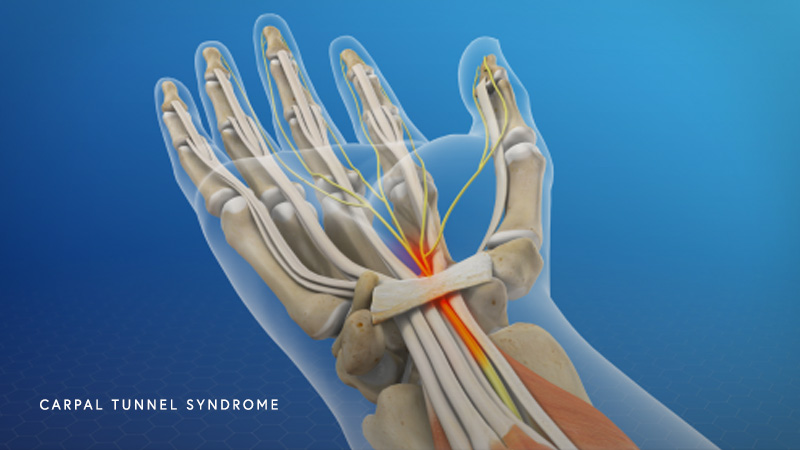Carpal Tunnel Syndrome
Carpal Tunnel Syndrome (CTS) is a common condition that affects the hand and wrist. It occurs when the median nerve, which runs from the forearm into the hand through a narrow passageway called the carpal tunnel, becomes compressed or squeezed.
The carpal tunnel is a small, rigid tunnel-like
structure located on the palm side of the wrist.
The primary causes of Carpal Tunnel Syndrome are:
Repetitive hand movements: Activities that involve
repetitive hand and wrist movements, such as typing, using a computer mouse,
assembly line work, or playing musical instruments, can lead to CTS over time.
Prolonged wrist positioning: Maintaining the wrist in an
extended or flexed position for prolonged periods, such as while using a
computer keyboard with improper ergonomics, can contribute to the development
of CTS.
Medical conditions: Certain medical conditions like arthritis, diabetes, hypothyroidism, ganglions and obesity may increase the risk of developing carpal tunnel syndrome.
Acute Injury to the Wrist: forearm and wrist fractures
The symptoms of Carpal Tunnel Syndrome can vary in severity
and may include:
Numbness and tingling: Often felt in the thumb, index
finger, middle finger, and half of the ring finger. The sensation may radiate
up the forearm or even to the upper arm. In the initial stages, it's more prevalent at night and may cause sleep disturbances.
Weakness: Hand weakness and difficulty holding objects or
performing fine motor tasks can occur due to the compromised function of the
median nerve.
Pain: Pain may be present in the hand and wrist, and it may
worsen during nighttime.
Hand clumsiness: A decrease in grip strength and
coordination may lead to increased dropping of objects.
To diagnose Carpal Tunnel Syndrome, a doctor or a hand
therapist will typically perform a physical examination and may order nerve
conduction studies and electromyography (EMG) to evaluate nerve function and
identify the location of the compression. Early diagnosis is essential to
prevent the condition from worsening and causing permanent nerve damage.
Treatment options for Carpal Tunnel Syndrome may include:
Rest and activity modification: Reducing or avoiding
activities that aggravate the symptoms can provide relief.
Wrist splints: Wearing a wrist splint at night can help keep
the wrist in a neutral position and reduce pressure on the median nerve.
Pain management: Over-the-counter pain relievers or
nonsteroidal anti-inflammatory drugs (NSAIDs) may help alleviate pain and
inflammation.
Corticosteroid injections: In some cases, corticosteroid
injections into the carpal tunnel can provide short-term relief from symptoms.
Hand therapy: Specific tendon gliding and Median nerve gliding
exercises, a resting wrist splint will relieve the pressure on the nerve.

